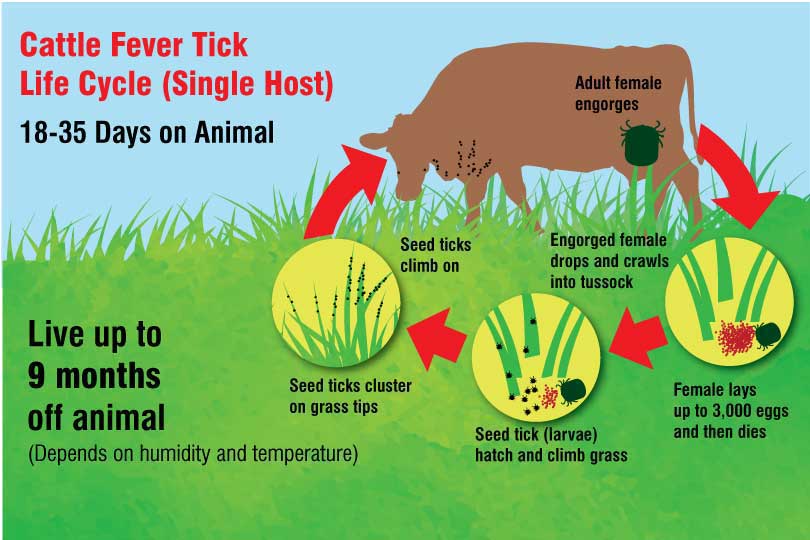By Jessica Domel
Multimedia Reporter
To continue the fight against cattle fever ticks and the disease they carry, the U.S. Department of Agriculture (USDA) recommends more wildlife fencing in Texas.
In late May, USDA’s Plant and Animal Health Inspection Service (APHIS) published a final environmental impact statement on how to best protect the United States—particularly South Texas—from cattle fever ticks.
The statement recommends the installation of eight-foot-tall wildlife fencing in strategic areas along the outer, northern-most boundaries of the quarantine zone—most likely in Maverick, Starr, Webb and Zapata counties.
APHIS will construct the fencing, and the Texas Animal Health Commission (TAHC) will be responsible for its maintenance.
“Changes over recent years have enabled the spread of cattle fever ticks beyond the permanent quarantine zones,” Dr. Angela Daniels, TAHC assistant executive director of Animal Health Programs, said in an interview with the Texas Farm Bureau Radio Network. “White-tailed deer and Nilgai antelope can host the cattle fever ticks, thereby spreading the ticks beyond the permanent quarantine zone.”
Current treatments for cattle fever ticks that work for livestock cannot be used for wildlife, because they involve working animals in chutes.
“The containment of the wildlife in the permanent quarantine zone is imperative to stopping the spread into neighboring counties,” Daniels said. “This strategy has been effective in the past. Game fencing was installed for approximately 17 miles parallel to the permanent tick quarantine zone some 27 years ago.”
As the wildlife populations evolved and expanded, they moved into non-infected regions. So, USDA is proposing up to 50 miles of game fencing to connect to the existing fencing to contain infested wildlife.
TAHC supports the proposal as the additional fencing would be another tool in fever tick outbreak response efforts by TAHC, USDA and the Texas Parks and Wildlife Department.
“It’s important to note that the ticks are not any more harmful than other ticks, but the cattle fever tick is capable of spreading the disease that causes cattle fever or babesiosis,” Daniels said.
Once cattle are infected with bovine babesiosis, they experience rapid and extensive loss of red blood cells and up to 90 percent mortality in naïve cattle.
The southern region of the U.S. is home to more than 400,000 cattle operations that produce a third of all cattle in the country.
USDA estimates if cattle fever ticks are not eradicated, cattle industry losses across the southern United States could top $1 billion annually.
“Texas carries the burden of protecting the U.S. livestock industry from cattle fever ticks,” Daniels said. “For this reason, the solution involves federal agencies, along with the Texas Animal Health Commission and Texas Parks and Wildlife Department.”
The agencies currently check and treat livestock for ticks, capture and treat stray livestock and survey wildlife movement to prevent further spread of cattle fever ticks.
“We are very concerned about the spread of cattle fever ticks to the north and east of the infected areas,” Daniels said. “Cattle owners in these regions have been dealing with lengthy quarantine restrictions and mandatory tick treatments, which impact their ability to move and sell cattle.”
The review of APHIS’ environmental impact study ended July 2.
“It would be our hope that all of the necessary steps needed to build this fence would be in place as quickly as possible so the fence will be built soon,” Daniels said.
APHIS will work with property owners in the selected areas to install the eight-foot-tall game fencing, if the recommendation is approved.
Current funding allows for two miles of fencing in Zapata County.
Additional wildlife fencing could be installed in Maverick, Starr and Webb counties to stop deer from travelling into uninfected areas.
According to TAHC, parts of nine South Texas counties have fever tick quarantines. They include: Cameron, Live Oak, Hidalgo, Kinney, Maverick, Starr, Webb, Willacy and Zapata.
Quarantine maps are available on www.tahc.texas.gov.

